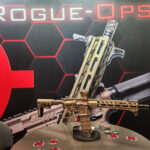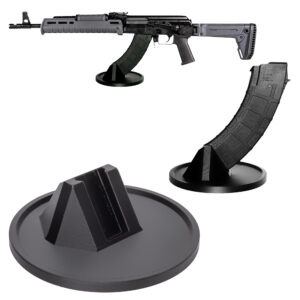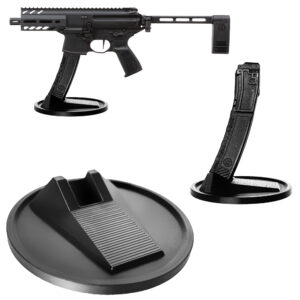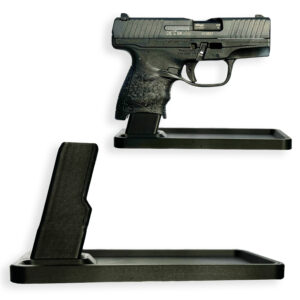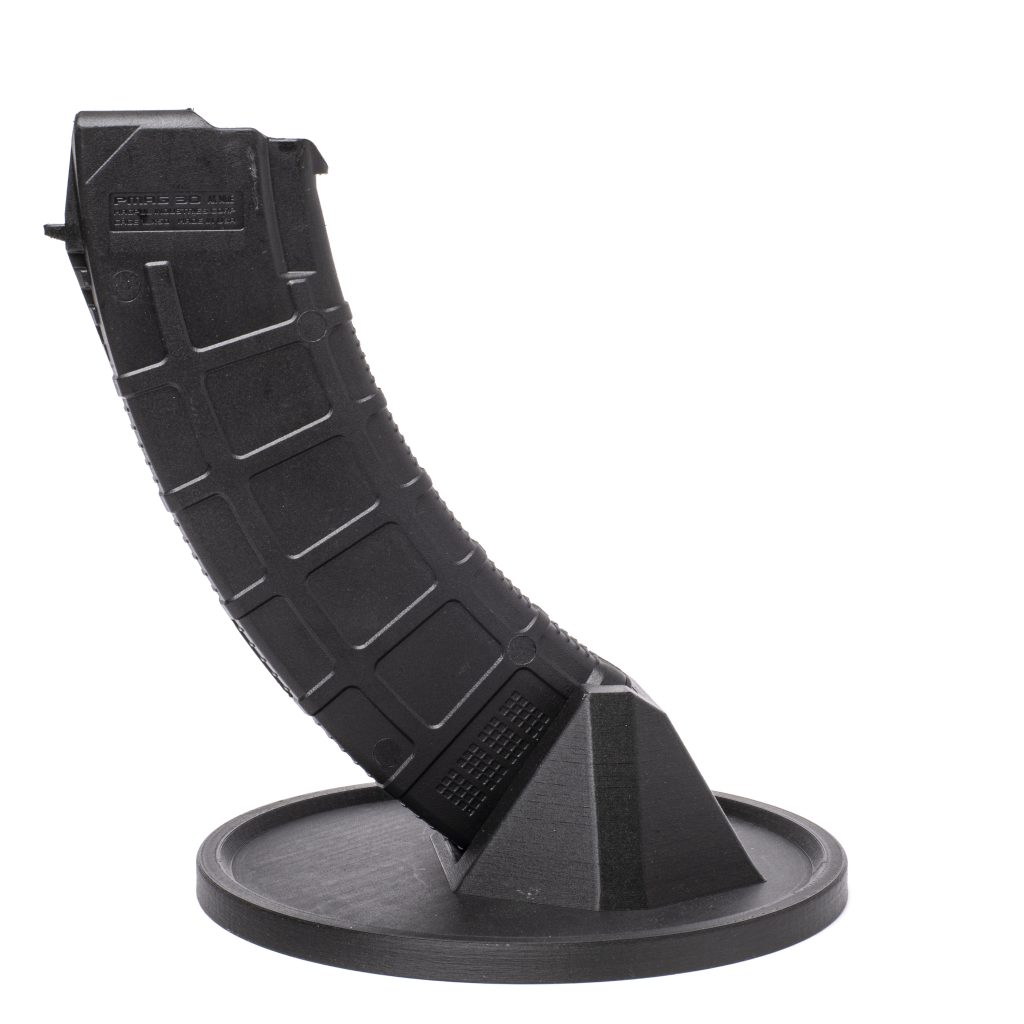Introduction To The Akm Rifle
Historical Background And Development
The AKM rifle, a modernized variant of the original AK-47, holds a significant place in the annals of firearm history due to its widespread use and enduring legacy. The roots of the AKM can be traced back to the late 1940s when Mikhail Kalashnikov, a Soviet engineer and tank commander, designed the Avtomat Kalashnikova model 1947 (AK-47). This groundbreaking assault rifle quickly gained a reputation for its ruggedness, simplicity, and reliability.
However, as time passed and military needs evolved, there was a growing demand for an improved version that could address some of the limitations inherent in the original design.
In response to this demand, development on what would eventually become known as the AKM commenced in the mid-1950s. Officially adopted by the Soviet Armed Forces in 1959, “AKM” stands for Avtomat Kalashnikova Modernizirovanniy — Russian for “Kalashnikov’s Automatic Rifle Modernized.” The modernization process focused on enhancing manufacturability while retaining all of the key attributes that made its predecessor so renowned.
Several pivotal changes were implemented during this development phase. One major improvement was replacing many milled steel components with stamped sheet metal parts. This change not only reduced production costs but also lightened the rifle significantly without compromising structural integrity or operational efficiency. Additionally, modifications were made to improve accuracy and control; these included alterations to barrel construction and enhancements in recoil management through an improved muzzle brake design.
The historical context surrounding its development is equally compelling. The Cold War era saw an arms race between superpowers where technological advancements could tip scales dramatically. The AKM emerged not just as an upgrade but as part of a broader strategy to equip Soviet forces—and their allies—with reliable weaponry that could perform across diverse environments from dense jungles to arid deserts.
By combining practical design improvements with strategic geopolitical considerations, the AKM became more than just an evolution of its predecessor—it became an icon in global military history. Its influence endures today through countless variants used by armed forces worldwide and remains emblematic of Soviet engineering prowess during one of history’s most tumultuous periods.
Caliber And Ammunition
The AKM rifle, a modernized version of the iconic AK-47, is chambered primarily for the 7.62×39mm cartridge. This caliber has been a staple in military arsenals since its introduction by the Soviet Union in 1943 and continues to be widely used due to its balance between power, range, and controllability.
The 7.62×39mm cartridge is known for its intermediate power level, sitting between full-power rifle cartridges like the 7.62×51mm NATO and smaller calibers such as the 5.56×45mm NATO. This intermediate caliber offers several advantages that have contributed to the AKM’s enduring popularity. One of the key benefits is its ability to deliver substantial stopping power at close to medium ranges, making it particularly effective in various combat scenarios from urban warfare to open field engagements.
The cartridge typically features a bullet weight ranging from approximately 120 to 125 grains (about 8 grams). The standard military loadings propel these bullets at muzzle velocities of around 710 meters per second (approximately 2,329 feet per second), though this can vary slightly depending on specific loadings and barrel lengths. This velocity ensures that the round maintains sufficient energy over practical engagement distances while also contributing to manageable recoil – an essential factor for maintaining accuracy during rapid or automatic fire.
Another notable characteristic of this ammunition is its relatively pronounced ballistic arc compared to high-velocity rounds like those fired from Western assault rifles. While this necessitates some adjustment in aiming at longer distances, it also means that the bullets retain considerable kinetic energy downrange, enhancing their lethality even beyond typical engagement ranges.
In addition to standard ball ammunition, the AKM can fire a variety of specialized rounds designed for different operational needs. These include tracer rounds for marking targets or adjusting fire; armor-piercing rounds intended for penetrating body armor or light cover; and subsonic ammunition used with suppressors for stealth operations.
Overall, the combination of a robust caliber like the 7.62×39mm with versatile ammunition types makes the AKM rifle a flexible and formidable weapon system suitable for diverse combat environments.
Barrel Length And Overall Dimensions
The AKM rifle, a modernized version of the iconic AK-47, is renowned for its durability, simplicity, and effectiveness. One of the key aspects that contribute to its operational efficiency is its barrel length and overall dimensions.
The barrel length of the AKM rifle measures 415 millimeters (16.3 inches). This dimension strikes a balance between portability and ballistic performance. A longer barrel generally allows for higher muzzle velocity and improved accuracy over distance by providing more time for the propellant gases to act on the bullet. However, excessively long barrels can make a firearm cumbersome in close-quarter scenarios or when rapid maneuverability is required.
The 415mm barrel of the AKM ensures that it remains effective at medium ranges while still being manageable in tighter spaces.
In terms of overall dimensions, the AKM rifle has an overall length of 880 millimeters (34.6 inches) with the stock extended and approximately 645 millimeters (25.4 inches) when folded, depending on specific stock configurations used by various manufacturers or military forces. This ability to fold the stock significantly enhances its versatility, allowing it to be more easily carried or stored in confined spaces such as vehicles or during airborne operations.
The weight of the AKM also complements its dimensions; unloaded, it weighs about 3.1 kilograms (6.9 pounds). When loaded with a standard 30-round magazine filled with 7.62×39mm ammunition, this weight increases but remains within an acceptable range that does not overly burden the operator.
These specifications ensure that while maintaining a relatively compact form factor conducive to ease of handling and transportability, the AKM does not sacrifice firepower or accuracy significantly compared to longer-barreled rifles designed exclusively for long-range engagements.
In conclusion, the carefully considered barrel length and overall dimensions are integral to making the AKM rifle a versatile tool in various combat scenarios—from open fields to urban environments—providing soldiers with a reliable weapon capable of both precision at range and agility in close quarters.
Weight And Build Material
The AKM rifle, a modernized version of the original AK-47, showcases a blend of robust design and practical weight management, making it an enduring choice for military forces around the world. In terms of weight, the AKM is engineered to be lighter than its predecessor, tipping the scales at approximately 3.1 kilograms (6.8 pounds) without a magazine. When fully loaded with a standard 30-round steel magazine and ammunition, the weight increases to roughly 4.3 kilograms (9.5 pounds).
This relatively lightweight construction enhances maneuverability and reduces fatigue for soldiers during prolonged engagements or while traversing challenging terrains.
The weight reduction in the AKM can be attributed to several key design changes and material choices. Unlike the milled receiver of the original AK-47, which was carved from a solid block of steel, the AKM features a stamped sheet metal receiver. This method not only cuts down on manufacturing costs but also significantly reduces overall weight without compromising structural integrity or reliability.
Furthermore, various components of the AKM are crafted from high-strength materials that balance durability with lightweight properties. The barrel is made from chrome-lined steel which resists wear and corrosion while ensuring longevity even under harsh conditions. The gas tube cover and handguard are typically constructed from laminated wood or polymer materials—both options offer resilience against environmental stresses like moisture and temperature fluctuations while contributing to overall weight savings.
The use of synthetic materials extends beyond just functional elements; it also includes parts such as pistol grips and buttstocks in later versions or customized models of the AKM that increasingly adopt polymer-based designs over traditional wood to further reduce weight.
Overall, these carefully considered choices in build material underscore why the AKM remains highly valued: it strikes an optimal balance between durability and ease-of-use, ensuring that soldiers can rely on their weapon’s performance without being burdened by excessive heft. This thoughtful integration of lightweight yet strong materials exemplifies why the AKM continues to be an iconic firearm in both historical contexts and modern military applications.
Firing Mechanism And Rate Of Fire
The AKM rifle, an evolution of the iconic AK-47, is renowned for its reliability and simplicity, particularly in its firing mechanism and rate of fire. The firearm operates on a gas-operated, rotating bolt mechanism that has proven to be highly effective in various combat situations. This system harnesses the energy from the gas expelled when a cartridge is fired. As the bullet travels down the barrel, some of the propellant gases are siphoned off through a small port located near the front sight post.
These gases travel through a tube and push against a piston connected to the bolt carrier.
This action forces the bolt carrier rearward, extracting and ejecting the spent cartridge case while simultaneously compressing the recoil spring. As this spring decompresses, it propels the bolt carrier forward again, chambering a new round from the magazine and resetting for another shot. This cycle can occur semi-automatically with each pull of the trigger or fully automatically when in automatic mode.
One of the key aspects contributing to its widespread use is its robust firing rate. The AKM has an effective cyclic rate of approximately 600 rounds per minute (RPM), though this can vary slightly depending on specific conditions such as ammunition type and maintenance state. In practical terms, this means that in fully automatic mode, it can discharge ten rounds per second until either ammunition runs out or overheating becomes an issue.
The semi-automatic mode offers more controlled fire with each trigger pull resulting in one shot being fired. This versatility allows soldiers to adapt their firing strategy according to combat scenarios—whether requiring suppression with bursts of automatic fire or precision shots using semi-automatic functionality.
Additionally, due to its relatively moderate rate of fire compared to other modern assault rifles which can exceed 900 RPMs, it helps manage overheating issues better while maintaining acceptable accuracy levels during sustained fire sequences. The combination of these features makes AKM’s firing mechanism both efficient and resilient under diverse operational conditions.
Accuracy, Range, And Effective Use
The AKM rifle, a modernized version of the iconic AK-47, is renowned for its blend of durability, simplicity, and effectiveness in various combat scenarios. One of the critical aspects that make the AKM a preferred choice among many military and paramilitary forces worldwide is its balance between accuracy, range, and effective use. In terms of accuracy, the AKM rifle offers satisfactory performance for an assault rifle.
The standard iron sights are designed for rapid target acquisition in close to medium-range engagements. While it may not match the pinpoint precision of some Western rifles like the M16 or AR-15 series, it provides ample accuracy within its intended operational range. The mechanical simplicity of the AKM contributes to consistent performance even under harsh conditions such as mud, sand, and extreme temperatures.
This reliability ensures that soldiers can depend on their weapon to function correctly without frequent maintenance. The effective range of the AKM is another noteworthy feature. Chambered in 7.62x39mm caliber ammunition, it boasts an effective range of approximately 300-400 meters when fired by an experienced shooter using iron sights. When equipped with optical sights or used in conjunction with support elements such as machine guns or designated marksmen rifles within a squad, its engagement envelope can be extended further.
However, beyond this range, bullet drop and reduced terminal effectiveness become significant factors. Effective use encompasses how well a weapon integrates into various combat roles and environments. The AKM excels here due to its versatility and ease of operation. Its rugged design allows it to perform reliably across diverse terrains—from urban settings to dense forests and arid deserts—without compromising functionality. Its relatively simple manual-of-arms means that training soldiers on its use can be accomplished swiftly compared to more complex weapon systems.
Moreover, the moderate recoil generated by the 7.62x39mm cartridge makes controlled automatic fire feasible for trained operators while maintaining manageable levels during semi-automatic fire for accurate shot placement. This combination ensures that whether it’s suppressive fire in close-quarter battles or aimed shots at medium distances, the AKM remains a formidable tool in a soldier’s arsenal.
Related
